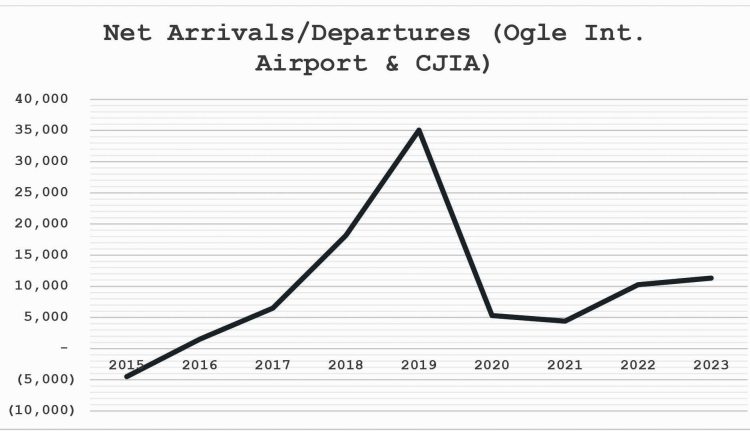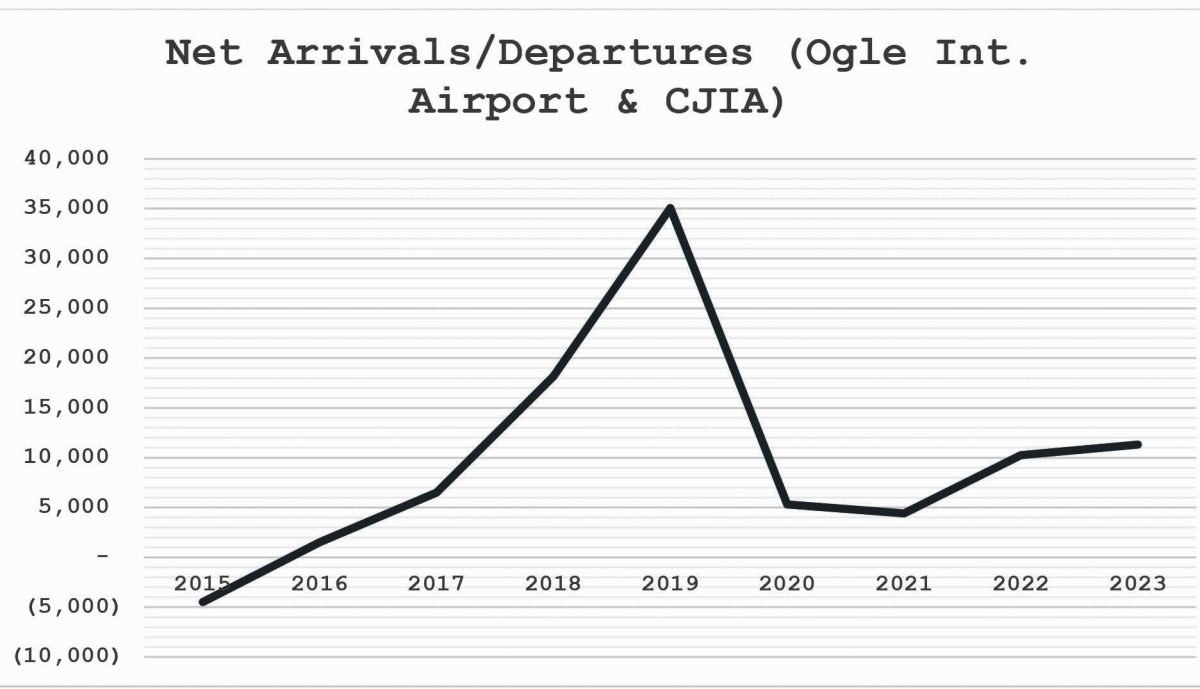Dear Editor,
There is a notion propagated by some commentators and aspirational political leaders alike that despite Guyana’s high GDP growth rates, the long lines at the passport office daily is indicative of people migrating. While it may be true that people are still migrating to other countries, this is not a phenomenon unique to Guyana. People migrate all the time even from developing countries to other countries in pursuit of their goals and ambitions or better opportunities.
Thus, what is important in our case, however, is to what extent are persons migrating; is it in the thousands as it were historically during the periods of political instability and when the country was bankrupt in the 1980s-1990s? And how can we determine how many Guyanese are migrating annually? It’s quite simple: we can extrapolate using arrivals and departures data for the two international airports, namely, Ogle International Airport and the Cheddi Jagan Inter-national Airport (CJIA). What are we looking for? We are looking for the net arrivals or departures for the various years available. What will that metric tell us or how do we interpret it? If the net arrivals is positive, it means that there are more persons coming/returning to Guyana than those leaving the country. On the other hand, if the net departures is positive (negative net arrivals), then this means that there are more persons who are leaving Guyana than those arriving or returning. Now, let’s look at the result.
The chart below shows the net arrivals and departures data published by the Guyana Bureau of Statistics for the period 2015-2023. According to this data, there was only one year in which there was a positive net departures of 4,488 persons in the year 2015; whereas for the years 2016 through 2023, there were positive net arrivals amounting to, cumulatively for that period, 88,027 or an average of 9,781 annually.
One may question how many of those persons are Guyanese and how many are expatriates associated with the oil and gas sector. In this regard, according to publicly available data, the sector employs approximately 6,000-10,000 persons, 90% of whom are Guyanese, which means that just about 10% of the employees in that sector are expatriates. As such, the large number of net positive arrivals (88,027) for the period 2015-2023 are not expatriates, since they only account for a relatively small percentage of the petroleum industry’s workforce.
 Source: Author’s based on Bureau of Statistics Data
Source: Author’s based on Bureau of Statistics Data
It is reasonable to conclude, therefore, that most of the persons returning to Guyana annually are either Guyanese from the diaspora returning home, visiting or travelling frequently to conduct business, and/or Guyanese residents visiting other countries, whether it’s for vacation/tourism purposes or for business purposes. More importantly, this analysis of the immigration data for the period 2015-2023, has empirically disproven the implicit notion that a large number Guyanese are migrating. The data evidently shows that the reality is the inverse of that notion, wherein thousands of persons are coming to and/or returning to Guyana annually, nearly 10,000 annually, more than those who are perhaps leaving the country permanently.
Sincerely,
Joel Bhagwandin






